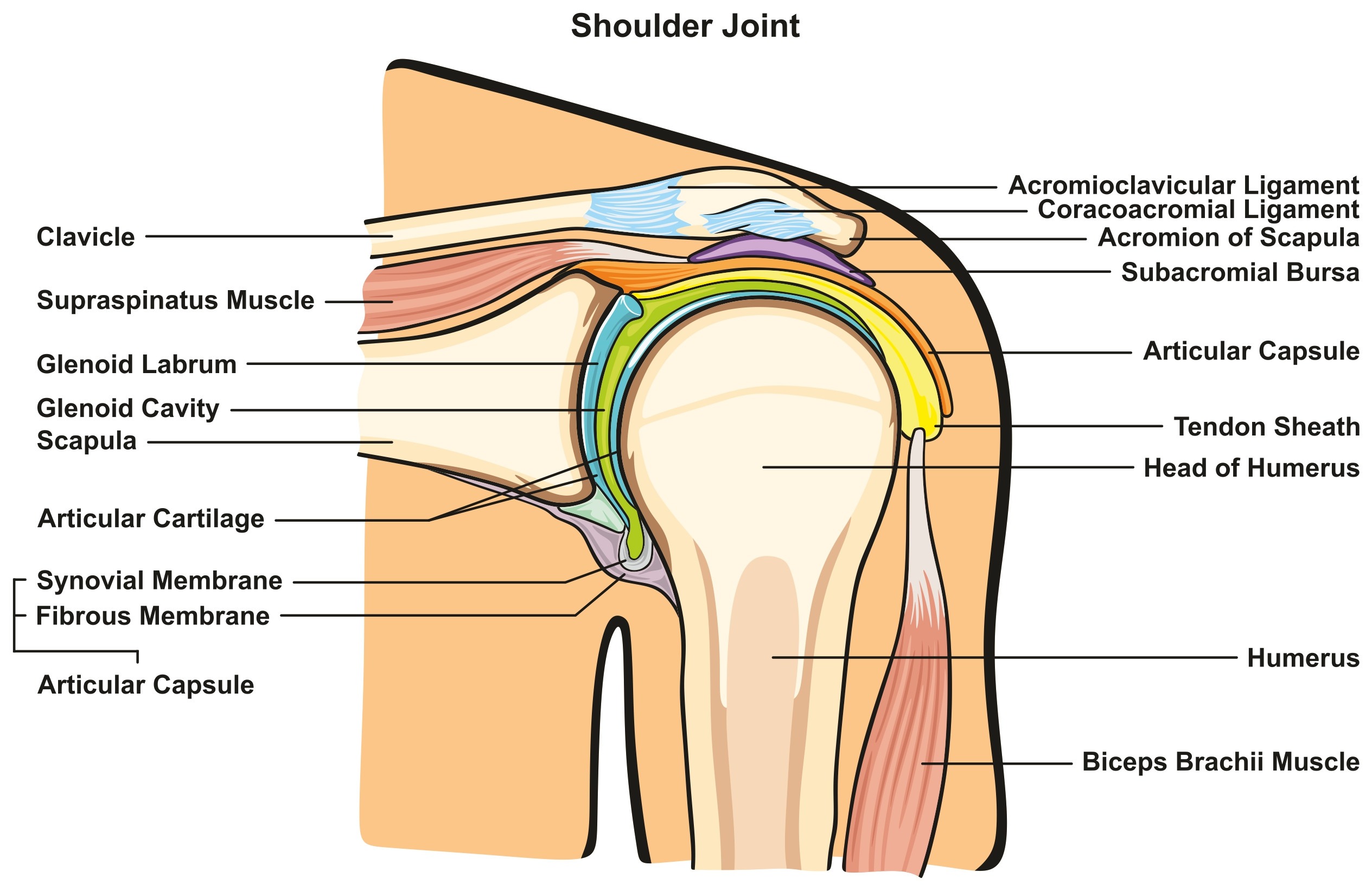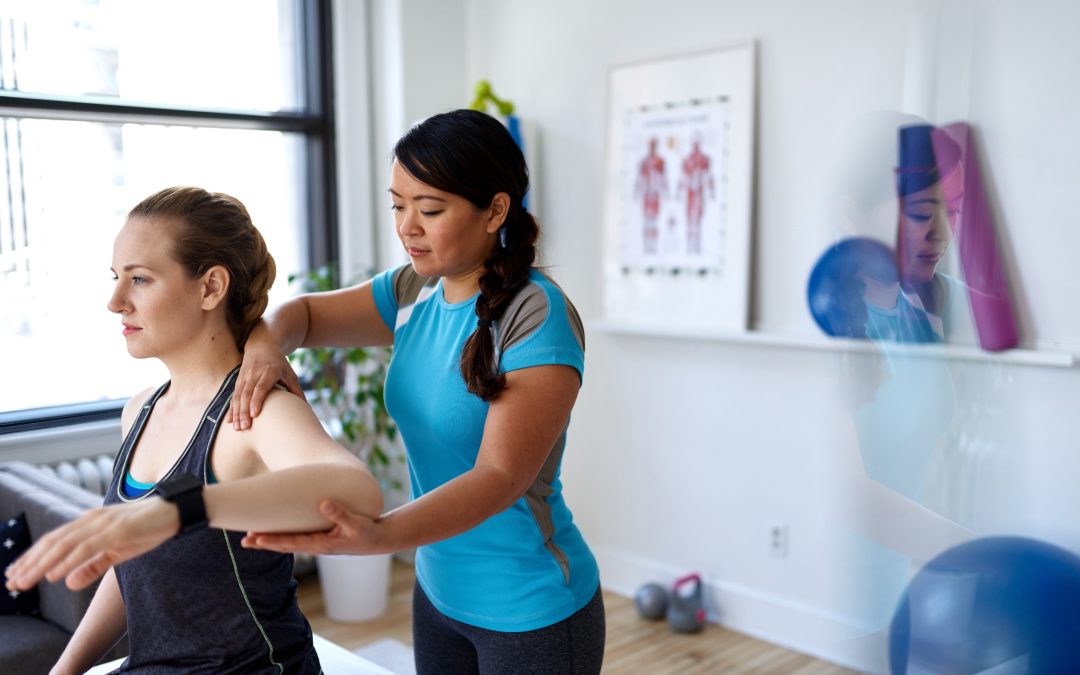As one of the most complicated joints, the shoulder can perform six different motions, making it one of the most important joints for personal trainers to fully understand. Because of the various directions and functions of the shoulder, it is susceptible to injury due to potential trauma, overuse, or degeneration requiring potential surgery. You may find that your clients have experienced such injuries and were subject to a repair process; two of the most common surgical procedures for repairing shoulder injuries are acromioplasty and rotator cuff repair.
The focus of this article is to review the difference between two common shoulder surgeries; acromioplasty and rotator cuff repair, and to discuss post-surgical rehabilitation and how to train your client, post-therapy.
Acromioplasty1
Indications for surgery are based on: insufficient subacromial space under the acromion, degenerative spurring present within the subacromial compartment, calcification deposits in cuff tendons and unsuccessful conservative physical therapy care.3
Anterior acromioplasty(subacromial decompression) involves the removal of the front portion of the acromion.2 An incision is made to the lateral border of the acromion; the anterior and lateral origins of the deltoid are detached from the acromion and later repaired before closure. The surgeon then debrides the soft tissues in the subacromial space. The surgeon then debrides unnecessary tissue and then coracromial ligament is removed. The patient is post-operatively placed in a sling.

Rehabilitation Management
The goal with physical therapy is again to first restore mobility. Full restoration of active and passive mobility is restored which typically takes ~ 8-10 weeks then light resistive exercises are begun to strengthen the weaker posterior shoulder. Formal return to functional activities is within ~9-12 weeks post surgical, at which time most patients are able to reach overhead and throw a ball without difficulty.
Post-Rehabilitation Training
Once discharged from physical therapy, the goal is continued strengthening and static to dynamic scapular stabilization training and core strengthening. Resistive exercises are focused on strengthening exercises that cause scapular upward rotation and humeral head depression which increase the surgical site by increasing the subacromial space.
To prevent the humeral head to migrate up during shoulder elevation contributing to potential impingement, posterior capsule stretching is taught to the client. The following exercises are recommended post-therapy:
- Posterior capsule stretching(see previous newsletter for picture)
- Mid-row exercise with band or machine(targeting weaker rhomboids)
- Low trapezius exercise with band
- External rotation with cable (using light weight) to target weaker infraspinatus/teres minor.
- One arm dumbbell row(targeting latissimus dorsi)
- Scaption exercises with light weight with thumbs up raising the weight to 90 degrees at a 45 degree angle.
- Core exercises targeting the lower back suck as alternate leg lift lying prone on ball, seated trunk rotation, or standing with cable or a Theraband.
- Tandem stance trunk rotation with cable
To prevent aggravation of the shoulder, the following exercises are recommended to be avoided:
- Shoulder press exercise
- Lat pulldown
- upright row exercise
- barbell squats
- All exercises involving the glenohumeral joint.
The rationale for these exercises was thoroughly described in the last newsletter.
Mini-Deltoid Rotator Cuff Repair
Rotator cuff injuries/tears can be classified as acute, chronic, degenerative, partial or full-thickness tears. With aging, the supraspinatus tendon is susceptible to overuse strain such as repetitive unilateral lifting. Falls or trauma can result from a myriad of accidents. Despite the injury, the individual who has pain and difficulty with overhead/side lifting may need surgery. Some partial-thickness tears can be treated nonsurgically.3
Medium to large tears are treated surgically with the acromioplasty procedure and mini-open procedure. Anterior acromioplasty (subacromial decompression) involves the removal of the front portion of the acromion.1,2 The mini-deltoid procedure begins with the surgeon creating arthroscopy portals superior, anterosuperior, and posterosuperior of the joint.
The medial deltoid is split through an incision across the lateral acromion. The tear is immobilized and the humerus is prepared for reattachment. Typically, suture anchors are used to reattach the tear to the humerus. The advantage of this procedure is that it does require a large incision into the deltoid preserving and speeding the rehabilitation.3
Typically the supraspinatus tendon comprised within the supraspinatus muscle is the most commonly involved tendon in rotator cuff tears. Since the posterior half of the supraspinatus tendon is covered by the infraspinatus tendon, a tear located in the half of the tendon involves part of the infraspinatus.4
Grading of Tears
Suspected tears are diagnosed typically via MRI of the shoulder which indicates the size as listed below.
Partial thickness tears<<<<<<<<<<<<<<<<<<>>>>>>>>>>>>>>>Full thickness Tears
(<1 cm. are small tears) medium to large tears (2-4 cm.) and large to massive tears (>5 cm.)
Rehabilitation Management
The individual will typically receive 6 weeks of passive range of motion to protect the graft. From 6-8 weeks post surgical, active assistive range of motion is introduced and at 8 weeks, AROM is implemented. The goal is for the patient to have full range of motion by 12 weeks post therapy. Typically a individual will return to sport 4-6 months post surgery once medically cleared. This will enable them to return to play tennis, racquetball or sport activity at that time.
Post-Rehabilitation Training
The focus post-therapy training is avoidance of overhead compression with such exercises such as shoulder press, barbell squats, Focus of the training program is continued strengthening of the weaker scapular retractors(low trapezius, rhomboids) and external rotators(infraspinatus/teres minor) of the shoulder, core as well as progress to dynamic strengthening.
Summary
Thoroughly understanding the surgical procedure, the anatomy, functional anatomy, and biomechanics of the shoulder will enable the personal trainer to be able to work with any post-surgical client enabling them to help their clients to reach optimal function. Chris Gellert, PT, MPT, CSCS, CPT is the President of Pinnacle Training & Consulting Systems. Gellert offers educational workshops on human movement, home study courses on human movement, and consulting services.
As a clinician, author, presenter, he has over 19 years of experience having treated and worked with individuals of all ages with various spinal injuries, post-surgical conditions, and traumatic and sport-specific injuries in industrial rehabilitation, outpatient, and private practice settings.
For more information, contact www.pinnacle-tcs.com or call 443-528-0527/(888)586-4188.
References
1. Maxey, Lisa., Magnuson, Jim. Rehabilitation for the post-surgical orthopedic patient. Mosby. St. Louis, London, Philadelphia, Sydney and Toronto. pages: 13-26. 2001.
2. Kisner, Carolyn., Colby, Lynn Allen, Therapeutic Exercise Foundations and Techniques. 3rd edition. F.A. Davis Company. Philadelphia. Pgs: 296-297. 1996.
3. Starkey, Chad., Johnson, Glen. Athletic Training and Sports Medicine. Fourth Edition. American Academy of Orthopaedic Surgeons. Jones and Bartlett. Boston. Pgs: 290-294. 2006.
4. Shimizu, Togo., Itoi, Eli., Minagawa, Hiroshi., Pradhan, Rabindra., Wakabayashi, Ikuko., Sato, Kozo. Atrophy of the Rotator Cuff Muscles and Site of Cuff Tears. Acta Orthopedic Scand. Volume 73(1) pgs: 40-43. 2002.
______________________________________________
Chris Gellert, PT, MPT, CSCS, CPT is the President of Pinnacle Training & Consulting Systems. Gellert offers educational workshops on human movement, home study courses on human movement, and consulting services. As a clinician, author, presenter, he has over 19 years experience having treated and worked with individuals of all ages with various spinal injuries, post-surgical conditions, traumatic, and sport specific injuries in industrial rehabilitation, outpatient, and private practice settings. For more information, contact www.pinnacle-tcs.com or call 443-528-0527/(888)586-4188.
These resources are for the purpose of personal trainer growth and development through Continuing Education which advances the knowledge of fitness professionals. This article is written for NFPT Certified Personal Trainers to receive Continuing Education Credit (CEC). Please contact NFPT at 800.729.6378 or info@nfpt.com with questions or for more information.


